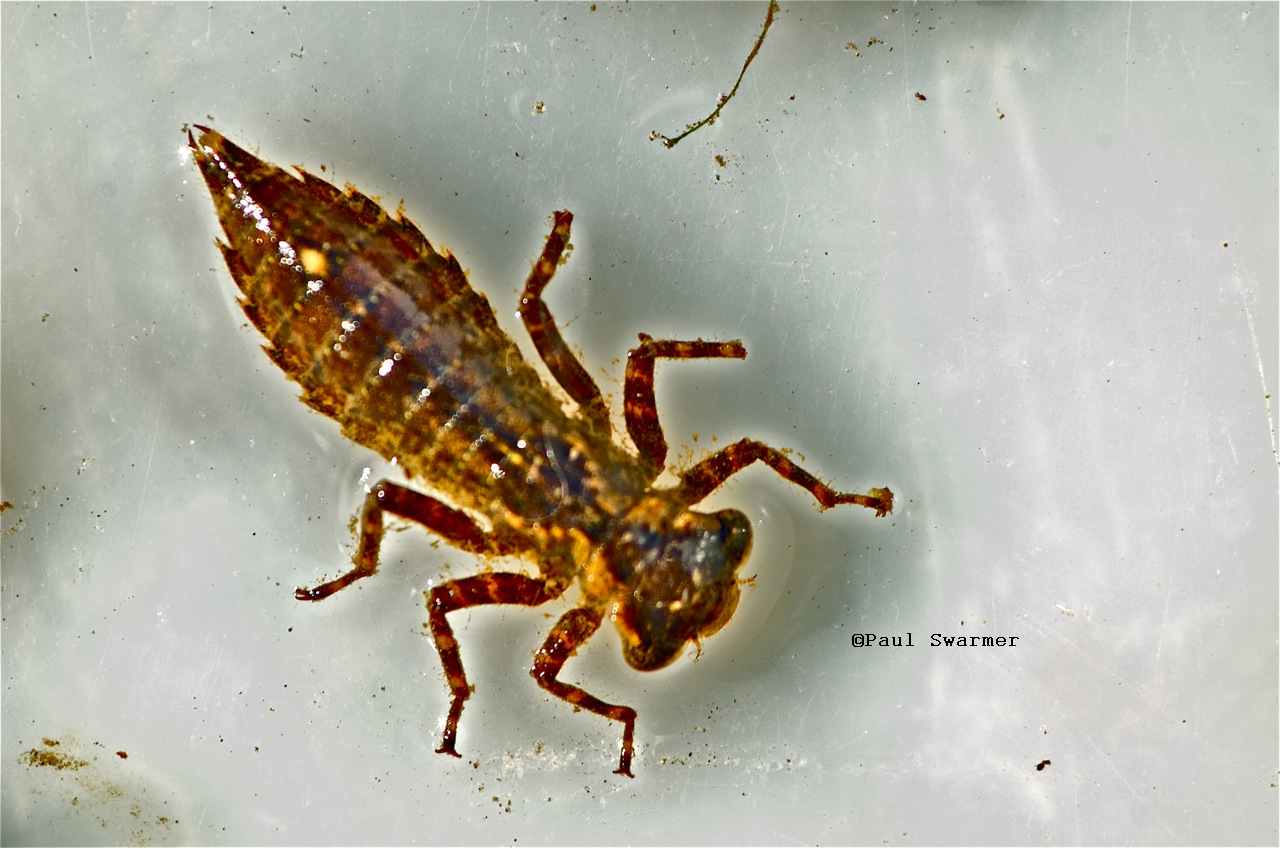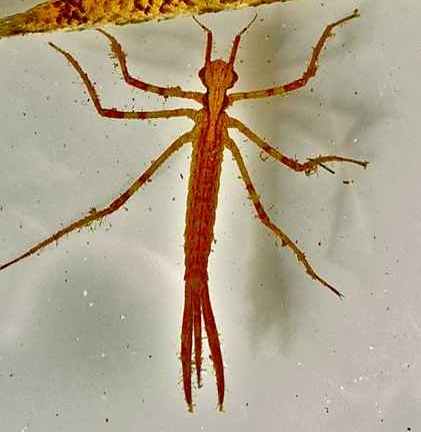Dragonflies and Damselflies of Ohio
Key to Dragonfly Nymph Families







Dragonflies and Damselflies of Ohio
Modified from Tennessen, 2008
1. Prementum and palpal lobes of labium flat or nearly so, without dorsal premental setae and usually without palpal setae. . . . . . . . . . . . . . . . . . . . . . . . . . . . . . . . . . . . . . . . . . . . . . . . 2
Prementum and palpal lobe of labium forming a spoon-shaped structure, usually with dorsal premental and always with palpal setae. . . . . . . . . . . . . . . . . . . . . . . . . . . . . . . . . . . . . . . . 3
2. Antennae 4-segmented; fore and middle tarsi 2-segmented; ligula without a median cleft. . . . . . . . . . . . . . . . . . . . . . . . . . . . . . . . . . . . . . . . . . . . . . . . . . . . . . . . . . . . . . . . . Gomphidae
Antennae 6- and 7-segmented; fore and middle tarsi 3-segmented; ligula with a median cleft. . . . . . . . . . . . . . . . . . . . . . . . . . . . . . . . . . . . . . . . . . . . . . . . . . . . . . . . . . . . . . Aeshnidae
3. Distal margin of each palpal lobe cut into large and irregular dentations (toothed projections) without associated setae; ligula represented by a toothlike process cleft in the middle. . . . . . . . . . . . . . . . . . . . . . . . . . . . . . . . . . . . . . . . . . . . . . . . . . Cordulegastridae, Cordulegaster
Distal margin of each palpal lobe smooth or with smaller and more regular dentations, each crenation (rounded projections) bearing 1 or more setae; ligula not as above. . . . . . . . . . . . 4
4. Head with a prominent frontal horn between bases of antennae; legs very long, the hind femur extending to or beyond the hind margin of abdominal segment 8; metasternum with a broad postero-mesal tubercle; abdomen strongly depressed, almost circular in dorsal view. . . . . . . . . . . . . . . . . . . . . . . . . . . . . . . . . . . . . . . . . . . . . . . . . . . . . . . . . . . . . . . . . . . .Macromiidae
Head without a prominent frontal horn between bases of antennae (exception: Neurocordulia molesta); legs shorter, the hind femur usually not extending to the hind margin of absomenal segment 8; metasernum without a postero-mesal tubercle; abdomen less depressed, more elongate in dorsal view. . . . . . . . . . . . . . . . . . . . . . . . . . . . . . . . . . . . . . . . . . . . . . . . . . 5
5. Ventral surface of prementum with a medial groove extending from basal hinge to at least halfway to ligula; crenulations (rounded projections) on distal margin of palpal lobe separated by deep notches, crenulaton usually one-forth to one-half as high as long; cerci usually more than half as long as paraprocts. . . . . . . . . . . . . . . . . . . . . Corduliidae
Ventral surface of prementum without a basal medial groove (some Perithemis have a vestigial line that appears to be a meial groove); crenulations on distal margin of palpal lobe usually separated by shallow notches, crenulations usually one-tenth to one-sixth as high as long; cerci usually less than half as long as paraprocts. . . . . . . . . . . . . . . . . . . . . . . . . . . . . Libellulidae
[Home]